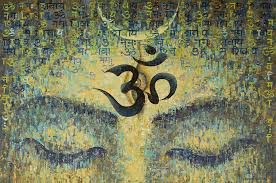Hindu Sanatana Dharma “Toolkit For World Peace” (Part 5 Of 5)


This is the concluding part of the article Hindu Sanatana Dharma “Toolkit For World Peace” and is in continuation of the previous parts. Part 1, Part 2, Part 3, and Part 4 were published on March 13, 2021, March 18, 2021, March 21, 2021, and March 28, 2021respectively.
In my last parts of this article, I narrated how Shree Krishna discoursed Arjuna to Stand up and do his Dharma (Righteousness) of Kshatriya, and don’t get entangled in materialist things.
In Shree Bhagavad- Gita, Lord Krishna dictates Arjuna on Karm Yog or the path of duty/Dharma (Righteousness). Then Lord Krishna glorifies Arjuna’s duty of Dharma (Righteousness)as the path of bhakti or loving devotion of God. Krishna Ji also describes the opulence of God as the divine nectar that nourishes devotion. Lord also expounds upon that Dharma also includes tattva jñāna or the of knowledge scriptural terms and principles.

In Chapter 16, Shree Krishna tells Arjuna that to know Dharma (Righteousness), he has to follow scriptures. He narrates that scriptures are the guide maps on the journey toward enlightenment. They provide us with knowledge and understanding. They also give us instructions on what to do and what not to do. These instructions are of two kinds “Vidhi” and “Niṣhedh”.
य: शास्त्रविधिमुत्सृज्य वर्तते कामकारत: |
न स सिद्धिमवाप्नोति न सुखं न परां गतिम् ||16.23||
yah shastra-vidhim utsrijya vartate kama-karatah
na sa siddhim avapnoti na sukham na param gatim
Those who act under the impulse of desire, discarding the injunctions of the scriptures, attain neither perfection, nor happiness, nor the supreme goal in life.
Finally, in the eighteenth and final chapter of the Bhagavad- Gita Shree Krishna summarizes the entire text. Lord Krishna here refers three times to Dharma (Righteousness).
First being a reaffirmation of His earlier admonition to perform one’s own, and not another’s, Dharma (Righteousness)in the below verse.
श्रेयान्स्वधर्मो विगुण: परधर्मात्स्वनुष्ठितात् |
स्वभावनियतं कर्म कुर्वन्नाप्नोति किल्बिषम् ||18.47||
shreyan swa-dharmo vigunah para-dharmat sv-anushthitat
svabhava-niyatam karma kurvan napnoti kilbisham
It is better to do one’s own Dharma (Righteousness), even though imperfectly than to do another’s Dharma, even though perfectly. By doing one’s innate duties, a person does not incur sin.

Second, beyond this, we have seen that the Bhagavad-Gita begins where Arjun forgets his Vedic Dharma (Righteousness) in the illusion of materialistic things. Lord Krishna has indicated it in various ways. Here, at the end of His teaching, the Lord most dramatically declares that full surrender to the Supreme Lord stands above the entire range of sacred duties known generally as Dharma (Righteousness).
सर्वधर्मान्परित्यज्य मामेकं शरणं व्रज |
अहं त्वां सर्वपापेभ्यो मोक्षयिष्यामि मा शुच: ||18.66||
sarva-dharman parityajya mam ekam sharanam vraja
aham tvam sarva-papebhyo mokshayishyami ma shuchah
Abandon all varieties of Dharma (Righteousness) and simply surrender unto me alone. I shall liberate you from all sinful reactions; do not fear.
Third, Shree Krishna repeatedly told Arjun to accomplish his Dharma (Righteousness)by completely surrendering his intellect to him. This does not imply that he will stop using the intellect; rather it means to utilize the intellect to the best of ability in fulfilling Lord’s will.
अध्येष्यते च य इमं धर्म्यं संवादमावयो: |
ज्ञानयज्ञेन तेनाहमिष्ट: स्यामिति मे मति: || 18.70||
adhyeshyate cha ya imam dharmyam samvadam avayoh
jnana-yajnena tenaham ishtah syam iti me matih
And I proclaim that those who study this sacred dialogue of ours will worship me (with their intellect) through the sacrifice of knowledge; such is my view and it is Dharma (righteousness).

Shree Krishna has mentioned repeatedly that surrendering to him is the highest duty of the soul and therefore the supreme Dharma (Righteousness). All other Dharma are preliminary duties, meant to bring one to the highest spiritual understanding of Krishna. Such conventional Dharma (Righteousness) is useful until one comes to the point of utter surrender to God. So, there is nothing incoherent when the Lord finally declares that the entire Bhagavad-Gita is conducive to dharma, in all its aspects.
Shree Krishna has concluded in Bhagavad-Gita that the Only Toolkit for World Peace is “Sanatana Dharma” And Is Easily Attained By Honest Faith and Surrounding to “KRISHNA”
DISCLAIMER: The author is solely responsible for the views expressed in this article. The author carries the responsibility for citing and/or licensing of images utilized within the text.
